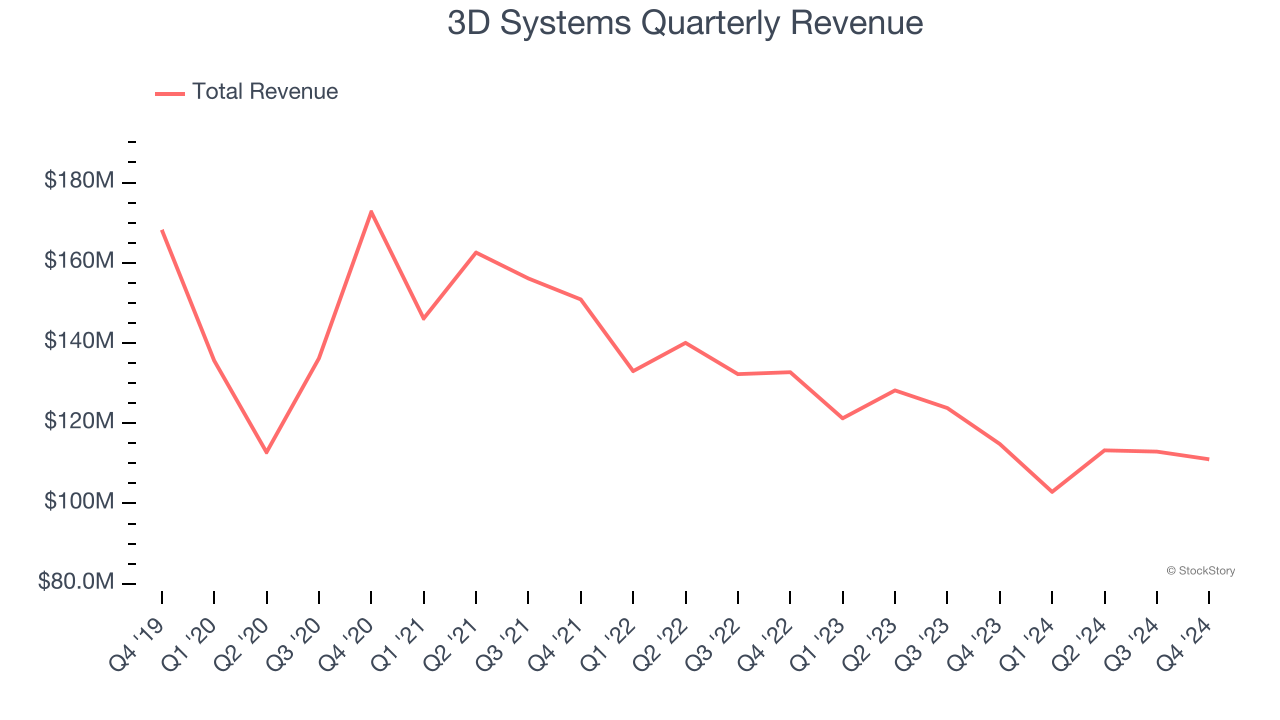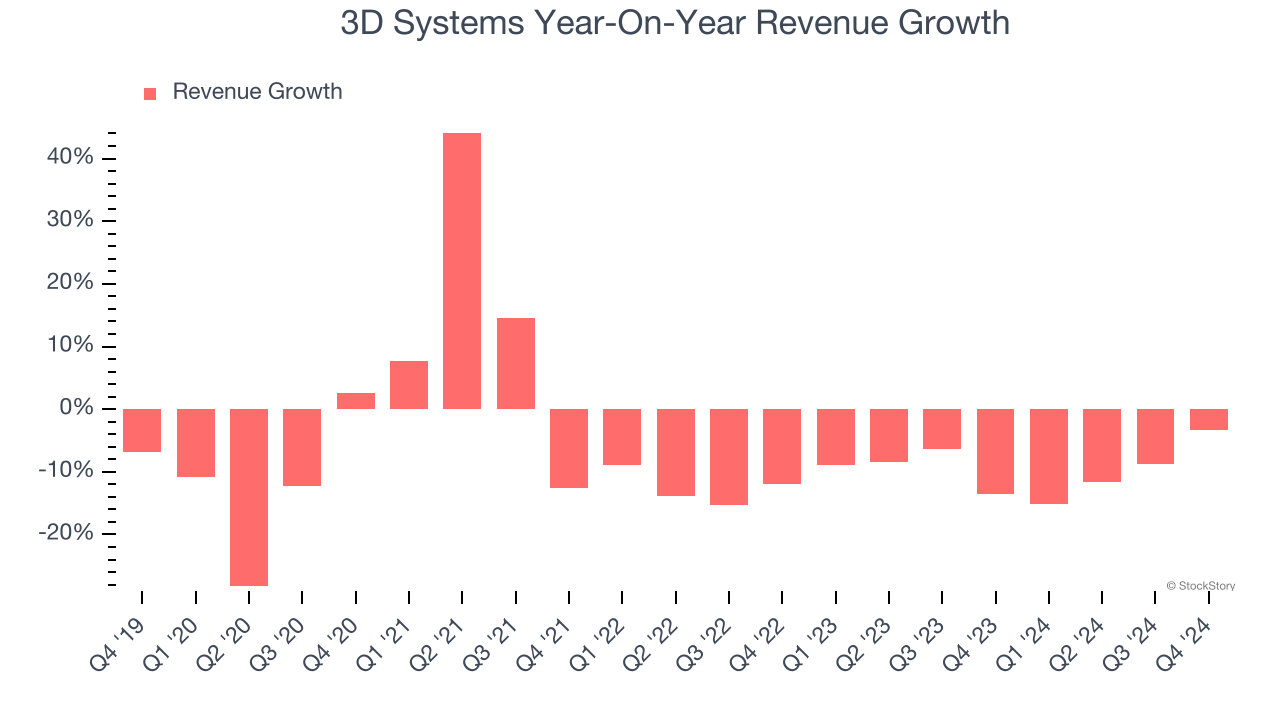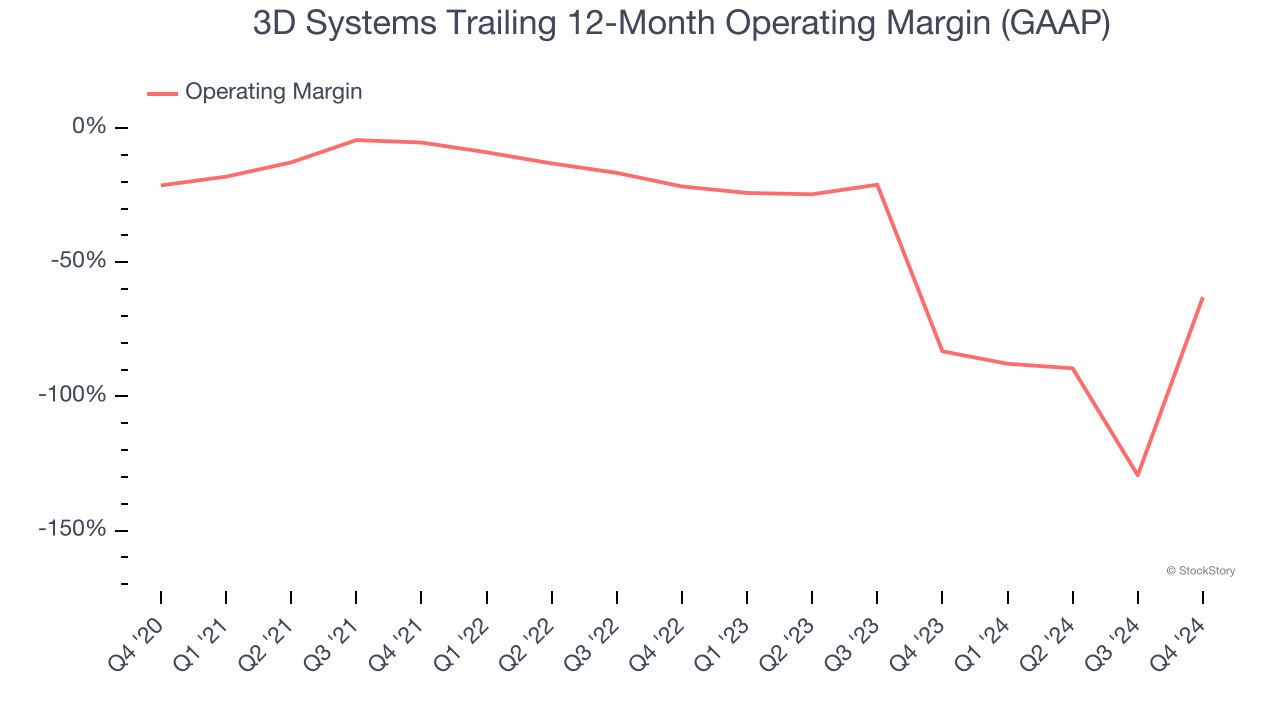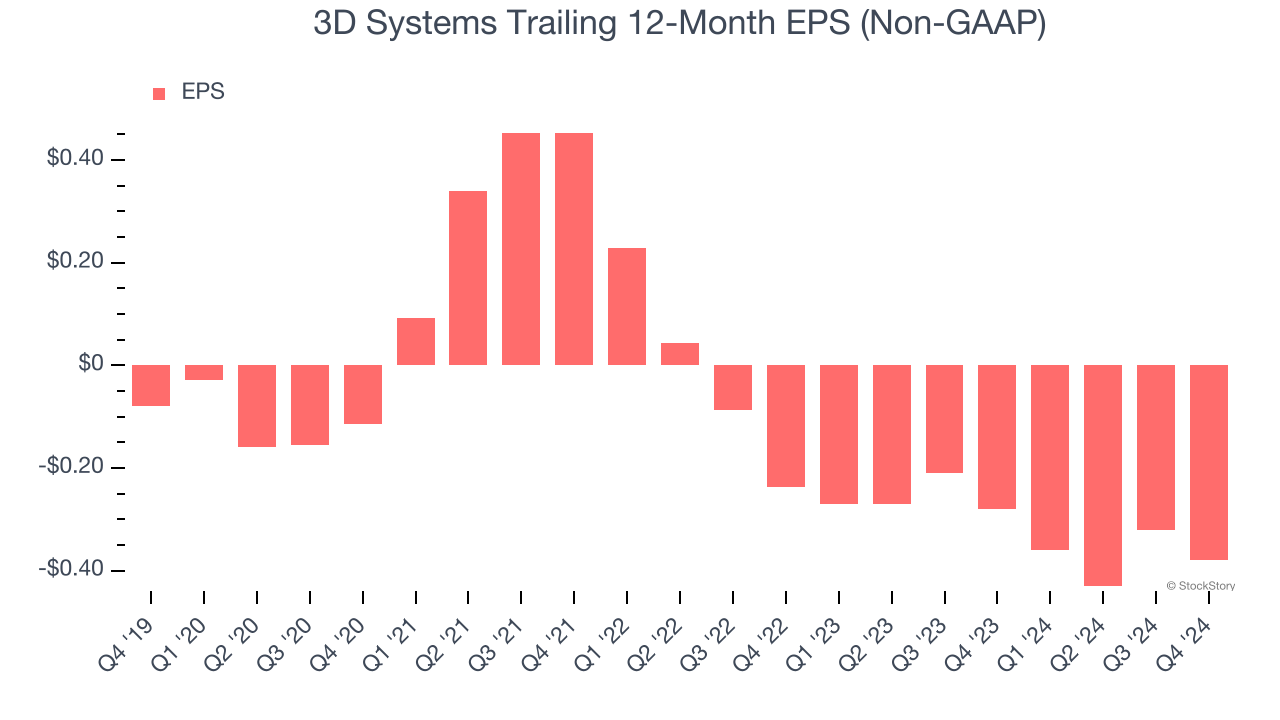
3D printing company 3D Systems (NYSE: DDD) missed Wall Street’s revenue expectations in Q4 CY2024, with sales falling 3.3% year on year to $111 million. The company’s full-year revenue guidance of $427.5 million at the midpoint came in 7.4% below analysts’ estimates. Its non-GAAP loss of $0.19 per share was 72.7% below analysts’ consensus estimates.
Is now the time to buy 3D Systems? Find out by accessing our full research report, it’s free.
3D Systems (DDD) Q4 CY2024 Highlights:
- Revenue: $111 million vs analyst estimates of $114.8 million (3.3% year-on-year decline, 3.3% miss)
- Adjusted EPS: -$0.19 vs analyst expectations of -$0.11 (72.7% miss)
- Adjusted EBITDA: -$19.1 million vs analyst estimates of -$8.92 million (-17.2% margin, significant miss)
- Management’s revenue guidance for the upcoming financial year 2025 is $427.5 million at the midpoint, missing analyst estimates by 7.4% and implying -2.9% growth (vs -9.7% in FY2024)
- Operating Margin: -27.4%, up from -285% in the same quarter last year
- Free Cash Flow was -$13.1 million compared to -$14.99 million in the same quarter last year
- Market Capitalization: $371.6 million
Company Overview
Founded by the inventor of stereolithography, 3D Systems (NYSE: DDD) engineers, manufactures, and sells 3D printers and other related products to the aerospace, automotive, healthcare, and consumer goods industries.
Custom Parts Manufacturing
Onshoring and inventory management–themes that grew in focus after COVID wreaked havoc on global supply chains–are tailwinds for companies that combine economies of scale with reliable service. Many in the space have adopted 3D printing to efficiently address the need for bespoke parts and components, but all companies are still at the whim of economic cycles. For example, consumer spending and interest rates can greatly impact the industrial production that drives demand for these companies’ offerings.
Sales Growth
A company’s long-term sales performance is one signal of its overall quality. Any business can have short-term success, but a top-tier one grows for years. 3D Systems struggled to consistently generate demand over the last five years as its sales dropped at a 7% annual rate. This wasn’t a great result and suggests it’s a low quality business.

Long-term growth is the most important, but within industrials, a half-decade historical view may miss new industry trends or demand cycles. 3D Systems’s recent performance shows its demand remained suppressed as its revenue has declined by 9.6% annually over the last two years. 
3D Systems also breaks out the revenue for its most important segments, Industrial and Healthcare, which are 63.7% and 36.4% of revenue. Over the last two years, 3D Systems’s Industrial revenue (aerospace, defense, and transportation manufacturing) averaged 4.4% year-on-year declines while its Healthcare revenue (dental and medical devices) averaged 14.5% declines.
This quarter, 3D Systems missed Wall Street’s estimates and reported a rather uninspiring 3.3% year-on-year revenue decline, generating $111 million of revenue.
Looking ahead, sell-side analysts expect revenue to grow 4.2% over the next 12 months. Although this projection implies its newer products and services will spur better top-line performance, it is still below the sector average.
Here at StockStory, we certainly understand the potential of thematic investing. Diverse winners from Microsoft (MSFT) to Alphabet (GOOG), Coca-Cola (KO) to Monster Beverage (MNST) could all have been identified as promising growth stories with a megatrend driving the growth. So, in that spirit, we’ve identified a relatively under-the-radar profitable growth stock benefiting from the rise of AI, available to you FREE via this link.
Operating Margin
Operating margin is one of the best measures of profitability because it tells us how much money a company takes home after procuring and manufacturing its products, marketing and selling those products, and most importantly, keeping them relevant through research and development.
3D Systems’s high expenses have contributed to an average operating margin of negative 36.1% over the last five years. Unprofitable industrials companies require extra attention because they could get caught swimming naked when the tide goes out. It’s hard to trust that the business can endure a full cycle.
Analyzing the trend in its profitability, 3D Systems’s operating margin decreased by 41.7 percentage points over the last five years. 3D Systems’s performance was poor no matter how you look at it - it shows that costs were rising and it couldn’t pass them onto its customers.

In Q4, 3D Systems generated a negative 27.4% operating margin. The company's consistent lack of profits raise a flag.
Earnings Per Share
Revenue trends explain a company’s historical growth, but the long-term change in earnings per share (EPS) points to the profitability of that growth – for example, a company could inflate its sales through excessive spending on advertising and promotions.
3D Systems’s earnings losses deepened over the last five years as its EPS dropped 37% annually. We tend to steer our readers away from companies with falling EPS, where diminishing earnings could imply changing secular trends and preferences. If the tide turns unexpectedly, 3D Systems’s low margin of safety could leave its stock price susceptible to large downswings.

Like with revenue, we analyze EPS over a more recent period because it can provide insight into an emerging theme or development for the business.
For 3D Systems, its two-year annual EPS declines of 26.7% show it’s still underperforming. These results were bad no matter how you slice the data.
In Q4, 3D Systems reported EPS at negative $0.19, down from negative $0.13 in the same quarter last year. This print missed analysts’ estimates. Over the next 12 months, Wall Street is optimistic. Analysts forecast 3D Systems’s full-year EPS of negative $0.38 will reach break even.
Key Takeaways from 3D Systems’s Q4 Results
We struggled to find many positives in these results as the company missed across all key metrics. Its full-year revenue guidance also fell short of Wall Street’s estimates. Overall, this was a weaker quarter. The stock traded down 4.4% to $2.60 immediately after reporting.
3D Systems underperformed this quarter, but does that create an opportunity to invest right now? When making that decision, it’s important to consider its valuation, business qualities, as well as what has happened in the latest quarter. We cover that in our actionable full research report which you can read here, it’s free.


